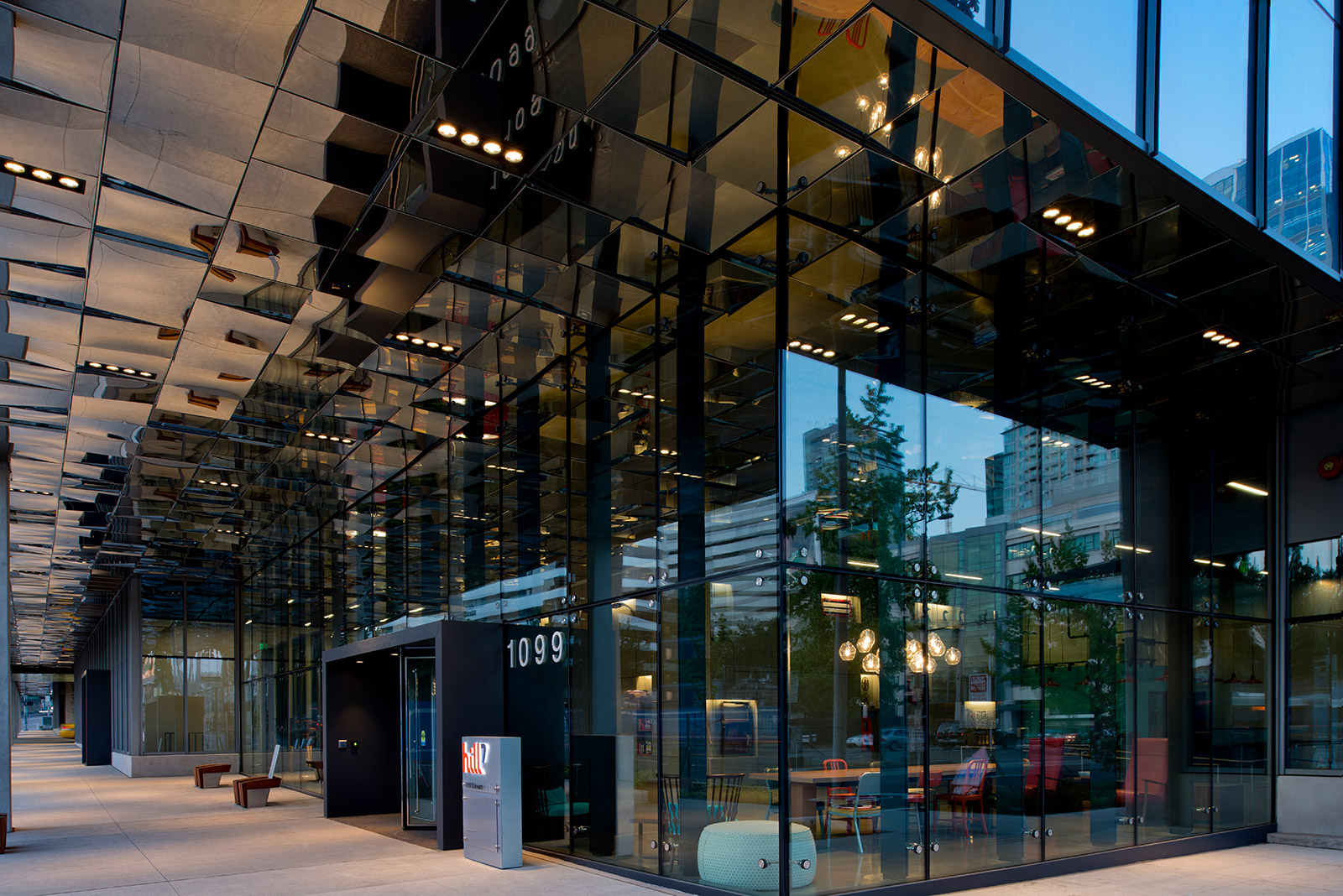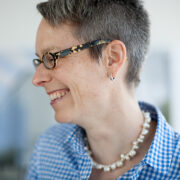
[Hill7 Project, photo courtesy of Touchstone]
In the summer of 2018, BUILD sat down with developer, professor, author, and urban planning super-hero A-P Hurd. We discussed making the world a better place through sustainable lifestyle patterns and taking action on Seattle’s prickly density and parking issues.
You teach a class on land economics and public policy at the University of Washington. What are the most important skills for your students to take away from that course?
The first is the ability to take what they’ve read or what someone else has produced and push it through the prism of their own life experiences. This allows them to come up with true insights about how to make the world work better–to propose different ways of understanding challenges or presenting information to the public that produce more effective results.
The second is related to communication. We practice “flipped classroom-learning,” in which students do a lot of the “absorbing information” outside of school and then apply it in class. We write articles and blogs because they are short and it forces them to sharpen their ideas. This allows students to become agents of change and build the confidence to stake out political territory around what they believe. The final assignment is to publish an op-ed in a newspaper, write a post for a public blog, or go down to Olympia and meet with their legislator about a bill. For the rest of their lives, these students understand that getting published or going to Olympia is a possibility. They understand that if you disagree with something, you can take action.
What role does the automobile play in your life?
I’ve never had a car, and I have a deal with my daughter that she can participate in any sports she wants as long as she can get there on foot. There are lots of things that are really good about children getting around a city on their own. John Medina, who wrote the book Brain Rules, also wrote Brain Rules for Babies, which is about how children’s brains develop. One thing from the book that really stuck with me is that when children roam, they develop mental maps of the geography around them and understand how places connect to each other. He discovered that children who roamed more were not only better at understanding geography their entire lives, but later in life they were better able to relate and connect ideas and concepts.
How do your beliefs at a macro level, like the goals of a carbon efficient city, influence how you live your individual, day-to-day life?
On occasion, I have conducted different household experiments that benefit the environment. Once, for two weeks , I decided not to buy anything that had plastic in it. It turns out that you cannot buy toothpaste without plastic, and if you want to buy toilet paper without plastic, you can only buy one roll at a time. You can find most other things without plastic if you really work at it.
I’m curious about how we can live in more sustainable patterns, and so I’m willing to put energy into it. On the other hand, sometimes it’s discouraging to try hard and realize that other people aren’t and that the system is set up for so much waste. If I walk to the bus in the pouring rain and a big pick-up truck goes by with only the driver in it, I feel like: “Shew! All this effort isn’t making much of a difference!” Also, I find it so frustrating when people idle in parked cars. It isn’t even producing any value for them. Sometimes I ask them to turn off their car, which is definitely embarrassing for anyone walking with me. But isn’t it the same as littering, even if the CO2 is invisible?
In the forward to your book, Carbon Efficient City, Denis Hayes highlights six cities, two of which are Seattle neighbors: Portland and Vancouver, BC. What are these urban environments doing better than Seattle?
Everyone loves to romanticize Portland. The city does have a really good transit system, but their ridership is lower than ours on a percentage basis. Their bike ridership is a lot higher, but it’s flat there, and we can’t compete with that topography in Seattle. They also have smaller blocks, which everyone loves to talk about. Portland is lovely, and we should applaud them without getting a Scandinavia complex about the city .
Vancouver, on the other hand, is kind of a hot mess because of unusual forces shaping its housing market. The city has had a huge real estate boom from foreign investment, but at the same time, they don’t have the fundamental economic drivers that Seattle does or the depth of economic vitality. Vancouver has affordability challenges that are quite possibly worse than Seattle’s. In response, they are creating a complex tax code that I’m not confident will yield the desired result. Across British Columbia, the new residential taxes and taxes for foreign owners are not always well-designed, and they are not being uniformly implemented, and that’s creating some emergent problems.
Are there ideas about cities and urban design that we need to move on from in order to create true sustainability?
Definitely. People need to stop thinking that they are entitled to parking on city streets. Sumner, a community about 30 miles south of Seattle, provides a good example. The city has a commuter rail station, and due to limited space in its parking lot, a lot of riders were using street parking. Sumner residents who lived near the station became frustrated, and they persuaded the city council to pass a law so that only Sumner residents could have a parking sticker for city streets, even though the rail station accommodates a much broader population. Now all the people who live outside of Sumner and were accessing rail transportation by parking on the city’s streets are no longer allowed to. So, guess where they are now? In their cars on I-5. This impacts the entire region, it impacts global sustainability, and there are no consequences for Sumner. The idea that people and cities exist without responsibility to the communities and land use around them is well past its sell-by date.
How can a city like Seattle find commonality between the design and development community’s interest in higher density and neighborhoods that are density-adverse? What are the fundamental issues here?
The city has done an exceptional job with their public outreach pertaining to density and affordable housing. They’ve been incredibly open minded with a deep desire to listen. But these are issues of hope, fear, and emotion. I find that the people who are unhappy with the solutions aren’t actually unhappy with the particulars; rather, they’re unhappy about the fact that Seattle is changing. What they love is going to change, and it’s going to become something they don’t love because it doesn’t exist yet.
I think there’s a temperamental difference between people who are more comfortable with ambiguity, and therefore more hopeful, and people who are uncomfortable with uncertainty, and subsequently more pessimistic. You might expect people who have had more things go wrong in their lives and more missed opportunities to be most uncomfortable with change and ambiguity, but it really seems to cut across class in a way that’s surprising. People who own homes in Wallingford are perhaps the most upset of all, and when it comes to their asset base, they are actually doing way better than the national average.
What aspects of the city’s land-use codes would you like to change?
Number one, I’d like to remove any requirements for off-street parking. If it’s a pain in the ass to have a car, then people will think harder about whether they want one. This isn’t just a sustainability issue; it’s also an affordability issue, because new people coming into our neighborhoods shouldn’t have to pay a lot more for their housing because the city’s codes force the inclusion of expensive subterranean parking.
Second, I think it’s important to create more flexibility in our single-family zones. People who build an ADU should be able to monetize it by selling it as a separate lot. Also, if people are going to be allowed to build 3,000 square-foot houses on single family lots (which they currently are,) why not allow that same structure to be a for-sale or for-rent duplex or triplex so that we could house more people?
How do you recommend that design professionals educate society about the differentiation between greenwashing and true sustainability?
Ah, that’s a tall order. OK, here’s a rule of thumb: First, always focus on impact. Second, if there is any uncertainty about impact, just buy less crap.
 A-P Hurd is the president of SkipStone, and the former president of Touchstone. She is also a faculty member and Runstad Fellow in the College of Built Environments at the University of Washington, where she teaches a course on land economics and public policy. She is on the Executive Committee of the Seattle Chamber Board and co-chairs the Chamber’s Policy Leadership Group. A-P is also on the boards of the Pacific Real Estate Institute and of CityBldr. She was the 2014 president of NAIOP Washington and published The Carbon Efficient City with the University of Washington Press in 2012.
A-P Hurd is the president of SkipStone, and the former president of Touchstone. She is also a faculty member and Runstad Fellow in the College of Built Environments at the University of Washington, where she teaches a course on land economics and public policy. She is on the Executive Committee of the Seattle Chamber Board and co-chairs the Chamber’s Policy Leadership Group. A-P is also on the boards of the Pacific Real Estate Institute and of CityBldr. She was the 2014 president of NAIOP Washington and published The Carbon Efficient City with the University of Washington Press in 2012.





